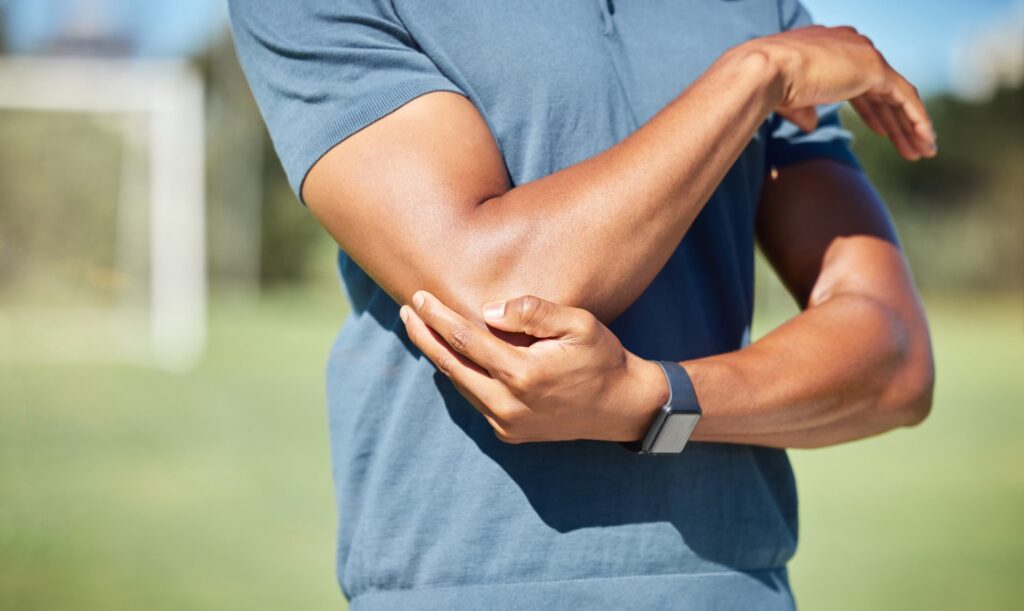FOOSH injuries are more common than you might think. The term FOOSH stands for “fall onto outstretched hand.” These accidents can happen to anyone and often result in a range of injuries. Understanding how to react and recover from such an injury is crucial for a swift and effective healing process. Following a structured plan will not only help with recovery but also prevent complications later on. Below, we’ll guide you on what steps to take immediately after the injury and throughout your recovery.
First Response After a FOOSH Injury
When you fall on outstretched hand, the first step is to assess the injury’s severity. Check for signs like swelling, intense pain, or bruising. These are indications that the injury might be serious. Here’s a simple checklist for your initial response:
- Rest the injured area immediately to avoid worsening the injury.
- Apply Ice packs wrapped in a towel for 15 to 20 minutes every couple of hours to reduce swelling.
- Use Compression with a bandage to help with swelling and support.
- Elevate the injured hand or arm to prevent swelling.
This RICE method is a great starting point for most FOOSH injuries. However, if the pain is severe, or you notice any deformity in the hand or wrist, it’s crucial to seek emergency medical help. Extreme pain, inability to move the fingers, or numbness can be signals of a more severe injury that needs professional evaluation.
Medical Evaluation: Understanding Your Injury
A medical check-up is important to understand the full scope of your injury. During your visit, expect a physical examination and possibly imaging tests like X-rays or MRIs. These tests help determine if there are any fractures, sprains, or dislocations, which are common types of FOOSH injuries. Symptoms often include sharp pain, swelling, or reduced mobility in the affected area.
Treatment Pathways: From Home Care to the Doctor
Most FOOSH injuries are treated conservatively. This means using methods that don’t need surgery. Immobilization, like wearing a splint, helps. Pain management with over-the-counter medication also aids recovery. Furthermore, physiotherapy sessions and at-home exercises are essential. They help improve strength and restore movement.
Sometimes, however, surgery might be necessary. This happens if there’s a severe fracture or other complications that can’t heal with conservative treatments. Surgery can seem daunting, but it’s vital for complete recovery in such cases. Your doctor will guide you through the best options for your specific injury.
Your Road to Recovery: Week by Week
Recovery from FOOSH injuries requires patience. Here’s a simple week-by-week guide to help track your progress:
- Week 1: Focus on rest and manage pain with medication. Use the RICE method diligently.
- Week 2: Begin gentle hand and wrist movements if recommended by your doctor. Continue using ice and elevate the hand.
- Weeks 3-4: Add in gentle exercises to improve flexibility. Attend physiotherapy sessions if suggested.
- Weeks 5-6: Gradually resume light activities. Focus on strengthening exercises as advised by your physiotherapist.
Always follow your doctor’s advice, and don’t rush the process. Flexibility and strength exercises must be balanced with rest.
Mastering Home Care and Pain Management
Managing an injury at home can be comfortable with the right techniques. For pain relief, try:
- Over-the-counter painkillers as recommended by your doctor.
- Heat treatments like warm towels or pads after the initial swelling reduces.
For handling day-to-day activities, use assistive devices like easy-grip handles or braces. They make tasks manageable during recovery. Additionally, good nutrition plays a role in healing. Foods rich in calcium and protein can speed up bone health and recovery.
Mental Resilience During Recovery
Recovering from FOOSH injuries can test your patience. Here are some ways to keep a positive outlook:
- Create small, achievable goals for each week.
- Understand that setbacks are part of healing. It’s okay to have slow days.
- Stay mentally active. Try reading or puzzles to boost your mood.
Keeping a positive and proactive mindset is half the battle won.
Preventing Future FOOSH Injuries
To avoid another fall, strengthening your body is crucial. Here are simple routines to prevent a fall after an outstretched hand scenario:
- Balance exercises, like standing on one foot, can improve stability.
- Wrist strengthening exercises enhance hand support during falls.
- Mindful walking and using handrails on stairs lower fall risks.
Learning how to fall safely by bending your knees and rolling can also help.
Signs It’s Safe to Return to Normal Activities
Knowing when to get back to your usual routine is key. Here are some indicators that you’re ready:
- You can move your hand or wrist without pain.
- Swelling and bruising have entirely reduced.
- You’ve regained full strength and flexibility.
Start with easy activities and gradually increase intensity to ensure you don’t overwhelm your healing hand.
Conclusion: Commitment to Your Healing Journey
Recovering from a FOOSH injury demands dedication. Remember, follow the steps outlined above and always prioritize your health. FOOSH injuries take time, and adhering to medical advice is crucial. With patience and perseverance, you’ll be back to your regular activities sooner than you think.
Get the Expert Care You Deserve
Suffered from a fall on an outstretched hand (FOOSH)? Don’t wait for the pain to worsen. At Raneshwar Multispecialty Hospital, our experienced specialists provide immediate care and effective treatment options to ensure a speedy recovery.
Book an appointment today and take the first step toward healing with our dedicated team by your side!




